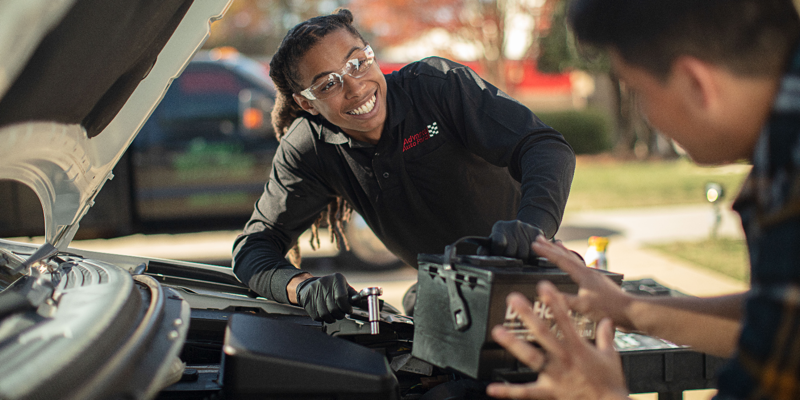Few things are more frustrating than climbing into a cold, snow-covered car or truck only to hear the dreaded “click-click" of a dead battery. It happens to the best of us. But why does a car battery's life seem to end more frequently in winter? Read on for the reason why, and then head over to your local Advance Auto Parts, where we'll test and even install a new battery for free* while you wait.

The inner life of your vehicle's battery
First, a quick refresher on the science happening inside a car battery. Lead acid batteries are the most common car batteries because they're inexpensive and dependable. They're made of a plastic case that houses a series of lead plates immersed in a pool of electrolyte—a mix of water and sulfuric acid. Each pair of plates makes up one "cell." When fully charged, each cell in a lead acid battery produces 2.1 volts. So, a 12-volt battery consists of six cells and is technically a 12.6-volt battery. A battery that only has 12 volts is not likely going to be able to start your vehicle.
The lead acid battery doesn't produce a charge but receives and stores an initial charge through a chemical reaction between the cell's lead plates and the electrolyte. But as the chemical reaction occurs, the positive and negative lead plates are slowly coated with lead sulfate. This process is known as sulfation, and it reduces your battery's ability to hold a full charge. To complicate matters, acid batteries experience self-discharge, a natural loss of charge over time. If left too long without a fresh charge, your battery can discharge beyond recovery.

So why do batteries fail in winter?
Extreme heat or cold can increase your battery's rate of discharge, making winter a triple threat to your battery. All the exposure to summer's heat can evaporate the water in the electrolyte, increasing sulfation. Then winter rolls around, and freezing temperatures slow the chemical reactions occurring inside a lead acid battery, further reducing your battery's ability to perform. At the same time, a cold engine and sluggish oil demand more power, while power-hungry features like heat and defrost place more demand on your battery. Although lead acid batteries last an average of four years, they can fail earlier under the right (or wrong) conditions.
Signs of a failing battery
Your battery won't always warn you before it fails, but here are common signs to watch for:
- Engine cranks more slowly
- White or light blue corrosion on the case or at the positive post
- Battery is more than three years old
- Headlights dim yellow instead of white
- Electronic accessories fail
- Dome lights dim
- Car horn sounds unusual
- Battery case swollen or cracked
- Smell of sulfur or rotten eggs
Here are some helpful tips to make your battery last. When it is time for a new one, Advance will help you find the right battery for your vehicle.
*Car battery testing and installation available on most automotive vehicles, at most locations, unless prohibited by law.
Have you had to deal with a dead battery in winter? Share your experience in the comments.







